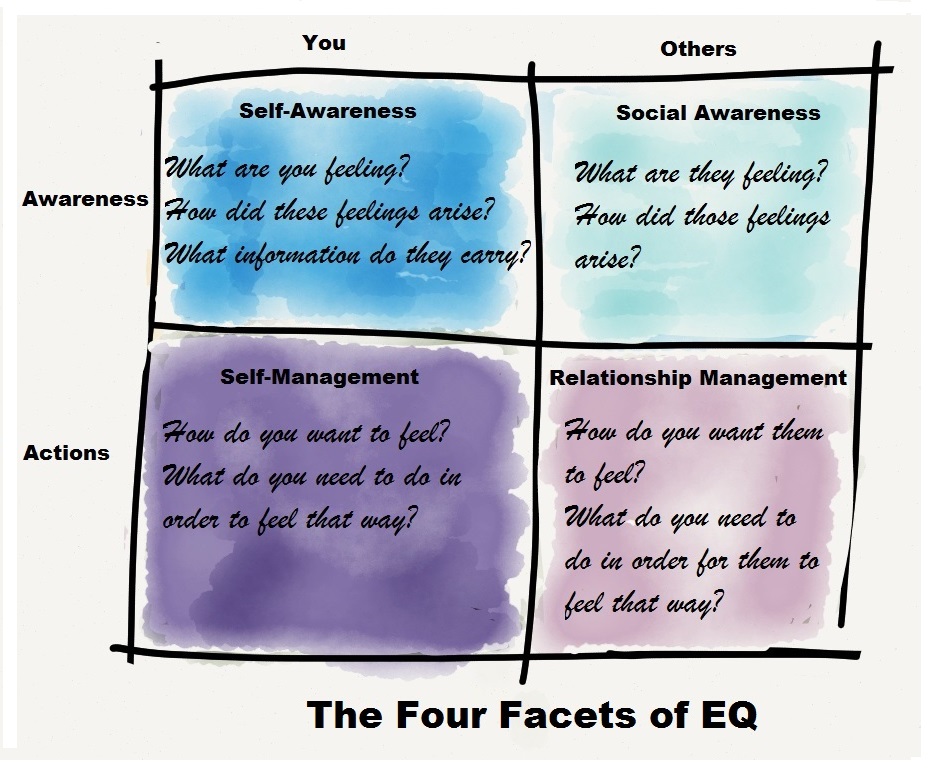Some people just love handling difficult customers. They volunteer to take the known persistent complainers. They enjoy the challenge of trying to calm someone down, connect with them and turn them into a loyal advocate for their business and the awesome service they offer.
Others feel intimidated or insulted by an angry or aggressive customer. They feel that they didn’t sign up to be shouted at. They find it hard to interrupt and are not sure if they should apologise or not. If the solution is out of their hands, they feel that there is nothing they can do.
Then there are the folk who feel that a difficult customer deserves as good as they give and it is ok to be aggressive back since ‘they started it’.
Before you consider your style when handling a difficult customer, think about why you have labelled them as difficult? What are the behaviours they are exhibiting that you consider difficult? And why might they be exhibiting those behaviours?
-
Could it be that by the time they get to you they have been passed around and noone has been able to help them?
-
Have they explained their story several times already?
-
Have they been promised something that hasn’t happened?
Could there in fact be quite understandable reasonable explanations for their frustration?
-
Maybe they hate complaining and have built themselves up into a frenzy to make their point?
-
Maybe their pet hamster has just died and the last thing they need today is this problem, whatever it is?
If you can put yourself into their shoes for a moment and recognise that they don’t know you and this cannot be a personal attack, might it make it easier to deal with their difficultness in a positive solution focused way?
Four steps for Dealing with a Difficult Customer
- Recognise how you are feeling (Self-awareness)
- Rationalise and control your emotional response (Self-management)
- Identify and analyse how the customer is feeling (Social awareness)
- Use your communication and empathy skills to manage how the customer is feeling (Relationship Management)
These steps echo the quadrant model of Emotional Intelligence. Emotional Intelligence is “…the capacity for recognising our own feelings and those of others, for motivating ourselves and for managing emotions effectively in others and ourselves.” – Daniel Goleman, Emotional Intelligence
Goleman believes that Emotional Intelligence can matter more than IQ and certainly in customer service work Emotionally Intelligence people are more able to cope effectively.

Watch out for Emotional Hijacking
Goleman coined the phrase “emotional hijacking” to describe what happens when our emotional brain takes over our rational brain. The more primitive part of our brain triggers fight, flight, or fright as a survival reaction to a physically dangerous world. The response is automatic, like a reflex. This response might be useful if someone wants to take your money and push you down, but it is not helpful when handling a customer!
Try the following techniques to conquer emotional hijacking moments:
-
Control your breathing. By taking slow deep breaths, you tell your body it is calming down.
-
Counting down. Count backward slowly from 10 or even 20. Connect each number to your slowed breathing.
-
Visualization. Create a mental picture of your favourite places to be calm like the beach, walking in the hills, and so on to relax yourself.
With practice these methods will help improve your ability to respond with an open and enquiring mind and create a positive outcome for both you and the customer. IMPORTANT: We recommend that you don’t try these techniques directly in front of the customer. If necessary, excuse yourself to another space to take a moment to regain control of your emotions.
Imagine this scenario told to us by our favourite vet, Dr Goulding:
Dr Goulding opened his clinic one morning and prepared for his first patient, Mr Talbot, who’s dog had an undiagnosed lump. Mr Talbot was frustrated and combative. Dr Goulding told us “He wasn’t prepared to listen to me as he thought I was like all the previous veterinarians who just gave him medication and got rid of him quickly as he wasn’t an easy client to deal with. As I asked him questions, he became more frustrated and short with me. The consultation turned the corner when I recognised that he was quite upset over his ‘best mate’ being in discomfort and I acknowledged what he had been doing to try to solve the problem. I sat down with him, discussed possible options and offered a referral to a specialist. He was very happy that I didn’t just brush him off and that I took the time to listen to him, his concerns and to educate him on his options. He is now a very loyal client and one of my biggest fans.”
Win – Win
Contact us to find out how we can help you build a culture of highly engaged, highly motivated, high performing people.
We hope you enjoyed our blog?
Please subscribe to our mailing list to get more great ideas and updates fortnightly. In return we will send you our free ebook ' The Essential Guide to Exceptional Communication'.




